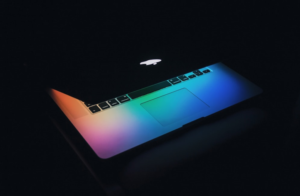Have you ever fumbled trying to find a website that you had open on your iPad, now that you’re settled in with your Mac? Or maybe you wished that a document that started in your iPhone would magically be ready to edit on your computer. Well, those little frustrations can add up, and might disrupt your workflow.
These little inconveniences make your beautifully designed Apple devices feel less streamlined than they should. Syncing your devices solves these issues, creating a smooth, efficient experience across the entire Apple setup. Hence, read on to discover how to set up syncing and simplify your digital life.
Expand Your Workspace by Connecting a Monitor to MacBook
A bigger screen can be a game-changer. That is especially true when you’re juggling things across your synced devices. Maybe you would like to edit photos on your monitor that instantly appeared from your iPhone. Or maybe you want to keep your iPad’s notes open right next to a document you are working on. This is where knowing how to connect a monitor to a MacBook comes in handy. In essence, connecting the monitor to a MacBook usually happens through Thunderbolt/USB-C or HDMI ports on your MacBook. However, the process might differ according to the type of monitor you are utilizing. Hence, check the guide linked earlier to learn everything you need to know.
Your Options for Setting Up Syncing
Let us get one thing straight. There are two main ways Apple handles syncing, and which one is right for you depends on your preferences and how you use your devices. Below, we break down the options and tell you how to choose the right one for you.
iCloud vs. Finder Syncing
Think of iCloud as your invisible storage locker in the sky. It syncs things automatically over the internet. That includes photos, contacts, and even Safari tabs. The upside is that it is super convenient, and your stuff is accessible anywhere you sign in with your Apple ID. The potential downside is that if you have tons of data, you might need to upgrade your storage plan.
But what about Mac syncing with Finder? This is the old-school method, where you plug in your iPhone or iPad directly into your Mac with a cable. Finder syncing is great for moving large files quickly (think of video projects) or backing things up locally. Also, you do not need an internet connection for it to work.
Choosing the Best Method for You
Here are a few questions to ask yourself:
- How fast and reliable is your internet? If it is great, iCloud is the most convenient option. Spotty connection? Finder might be more reliable.
- Are you syncing tons of big files? Photos, videos, and such take up space. Finder’s an easier way to move those without eating up iCloud storage.
- Do you value ‘anywhere’ access? iCloud means your synced stuff is on your Mac, your iPhone, and even your friend’s iPad if you sign in.
Troubleshooting Tips for When Syncing Gets Stubborn

So, we addressed how to sync iPad to Mac. Now, it is time to discuss what happens when even the smoothest tech needs a little nudge. If things are not syncing quite right, do not panic. Below are some common hiccups and how to fix them.
Your Device Isn’t Showing Up
So, if you are trying to sync your iPhone with your Mac and your device is simply not showing up, here is what you can do:
- The simple stuff first: Make sure your device is unlocked, turned on, and within range (especially with Finder syncing). Double-check your cable connections as well.
- Restart magic: Power cycling (turning it fully off and on again) both your Mac and your iOS device often works wonders.
- Check for updates: Always make sure all your devices are running the latest software updates.
Sync Won’t Start
If your iPhone wireless syncing process is not initiating, consider:
- Is it enabled? Check that syncing is actually turned on for the things you want (like photos) on both devices.
- Internet woes: With iCloud, a weak internet connection can stop the syncing in its tracks.
- A gentle force: Sometime quitting and re-opening the specific app you’re trying to sync is all you need.
Conclusion
Getting your Apple devices humming in harmony is not rocket science, as you can see in this guide. Whether you go the iCloud route or stick with the classic Finder syncing, the time you save and the frustration you avoid will all be worth it. Also, remember, if those devices ever get a little slow or stuck, those troubleshooting tips usually do the trick. Now, you can enjoy the magic of that smooth, synced-up Apple life!
